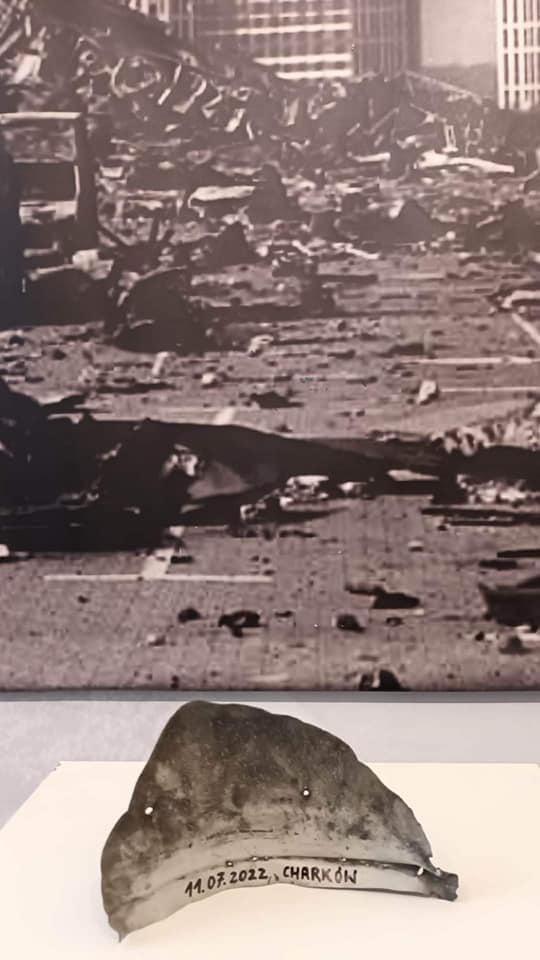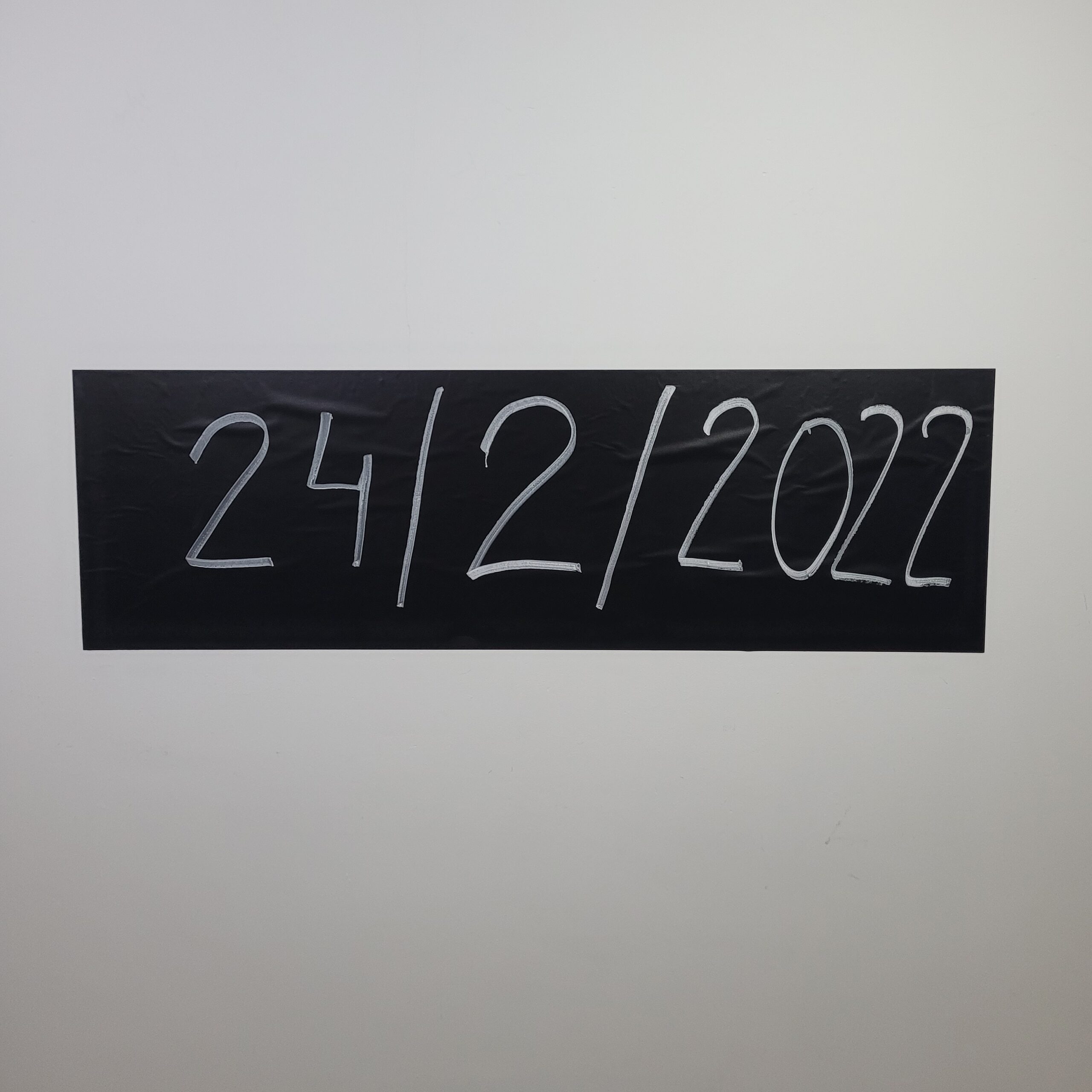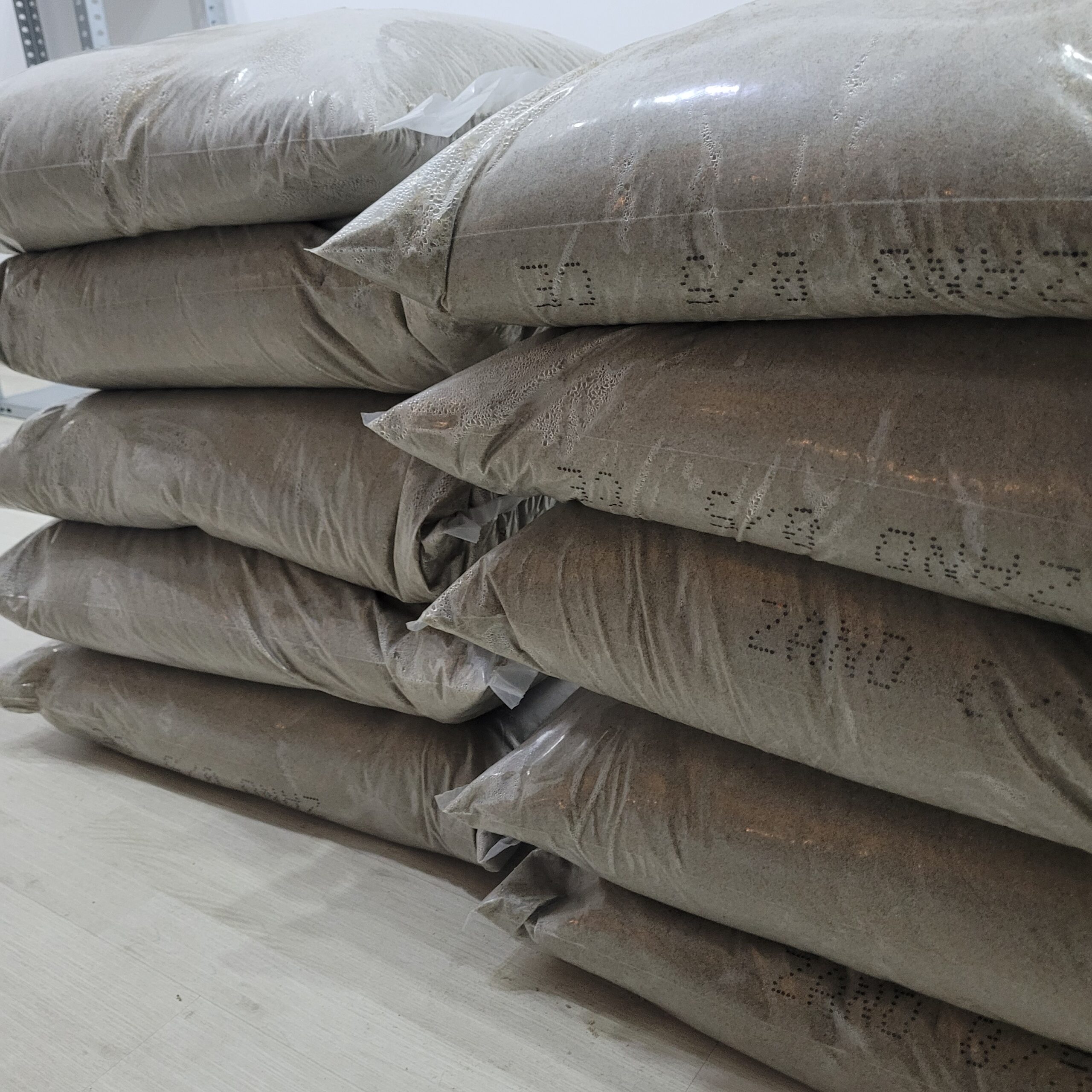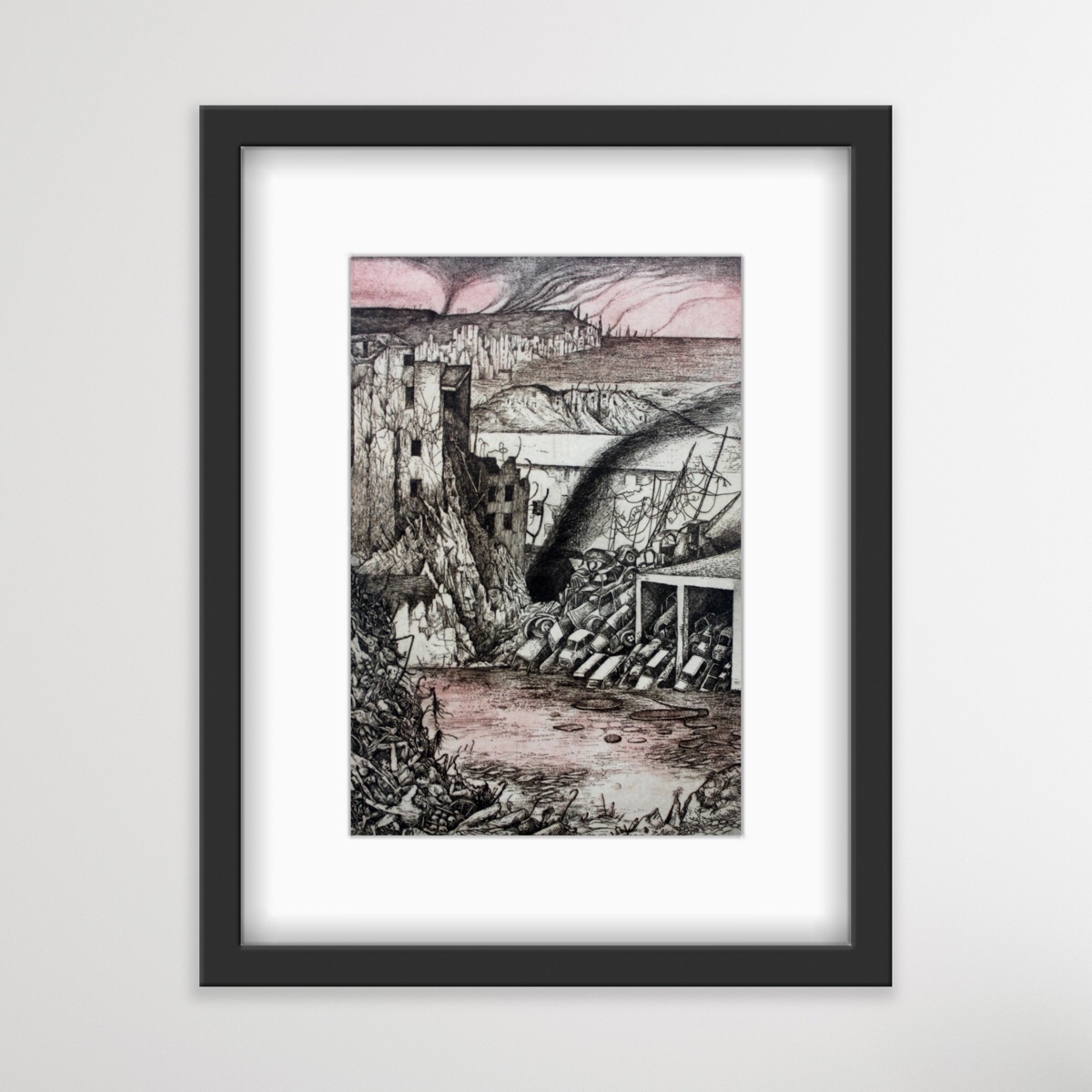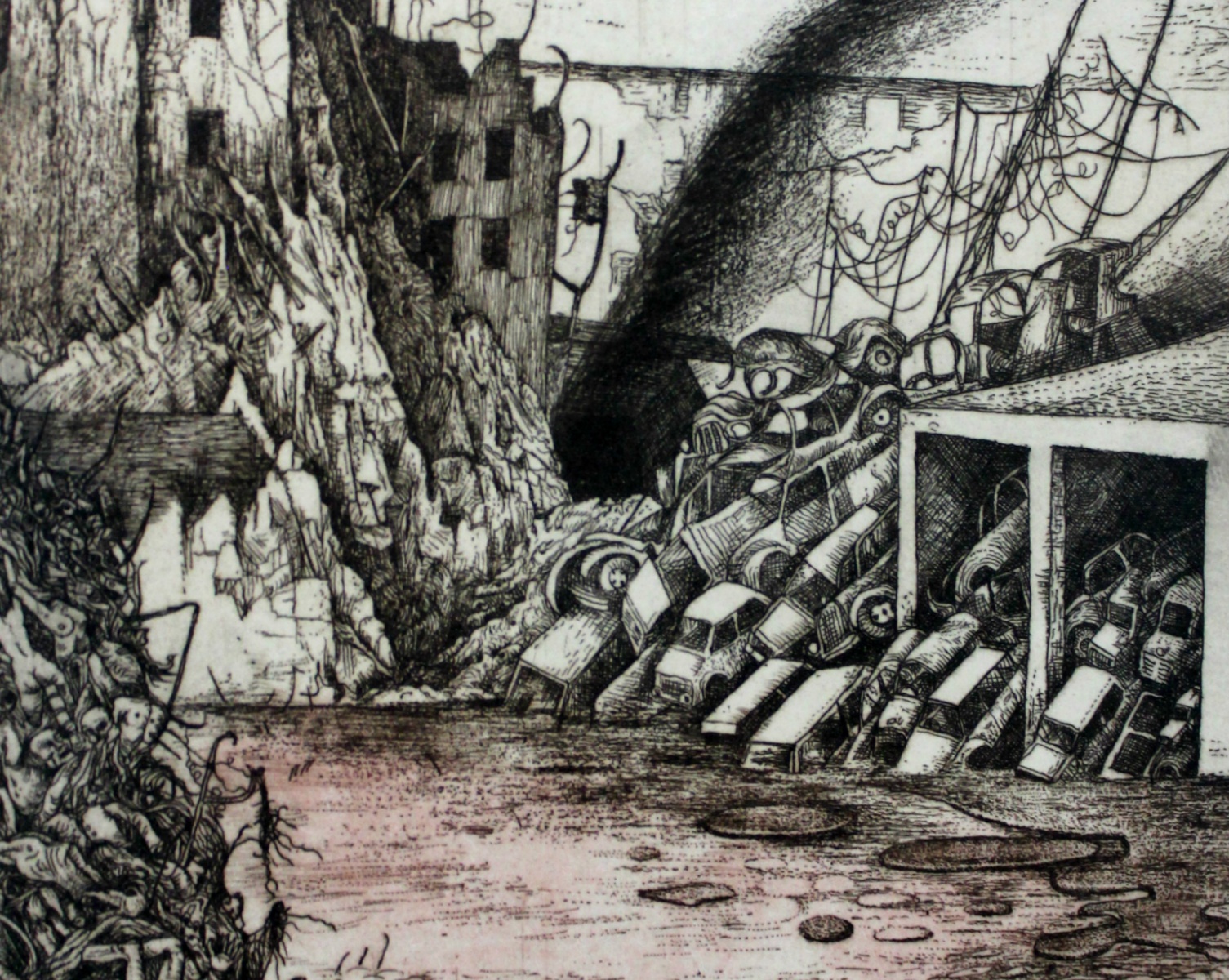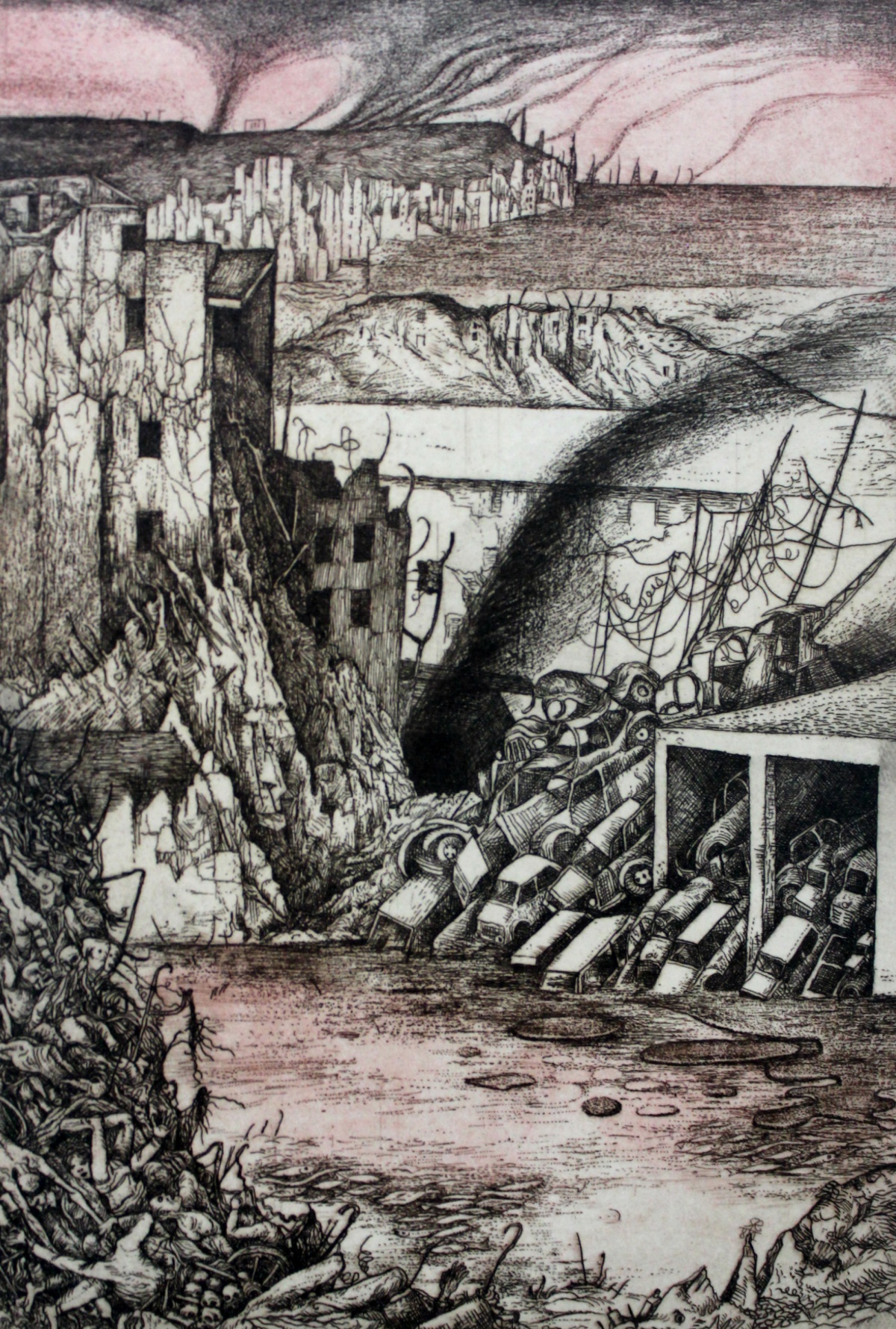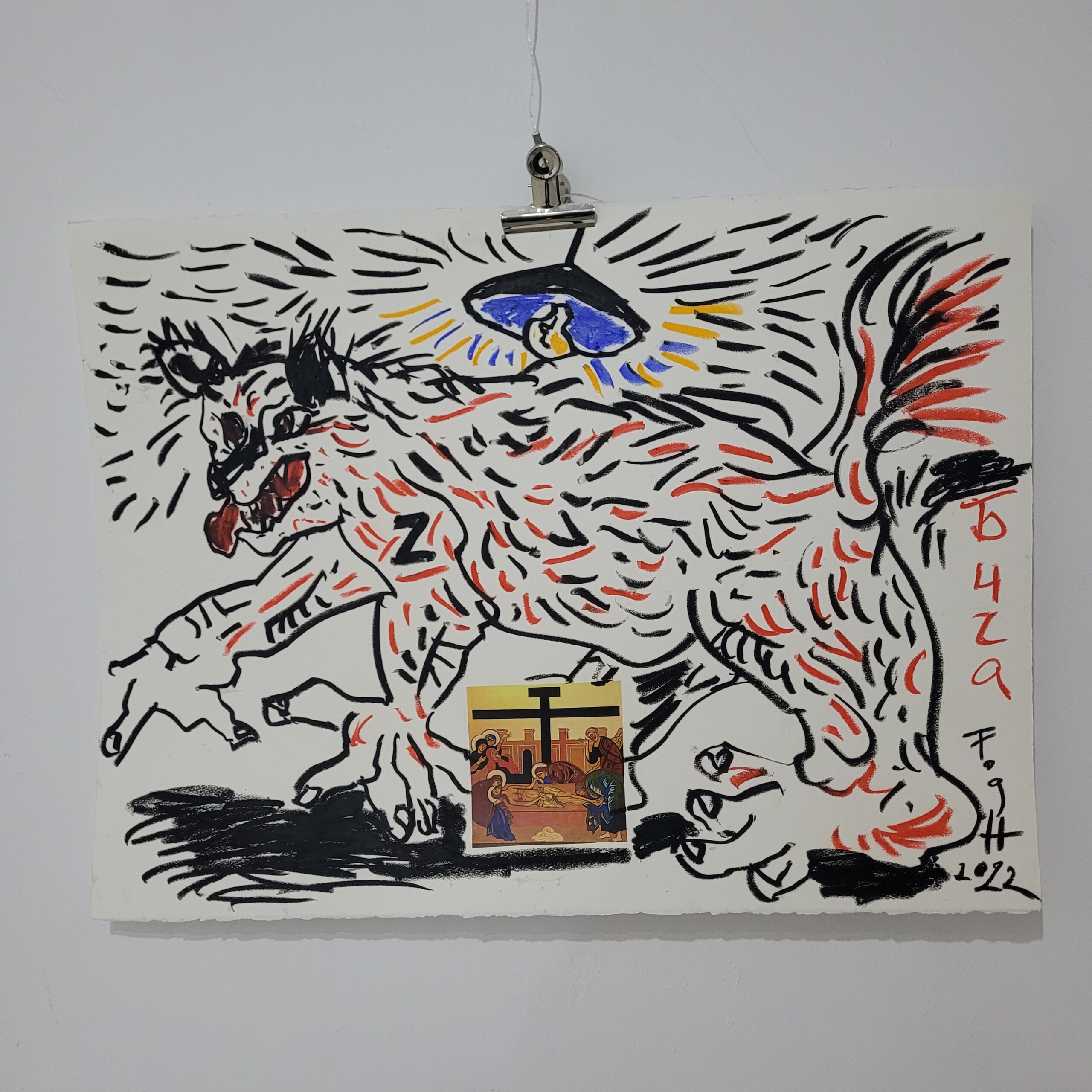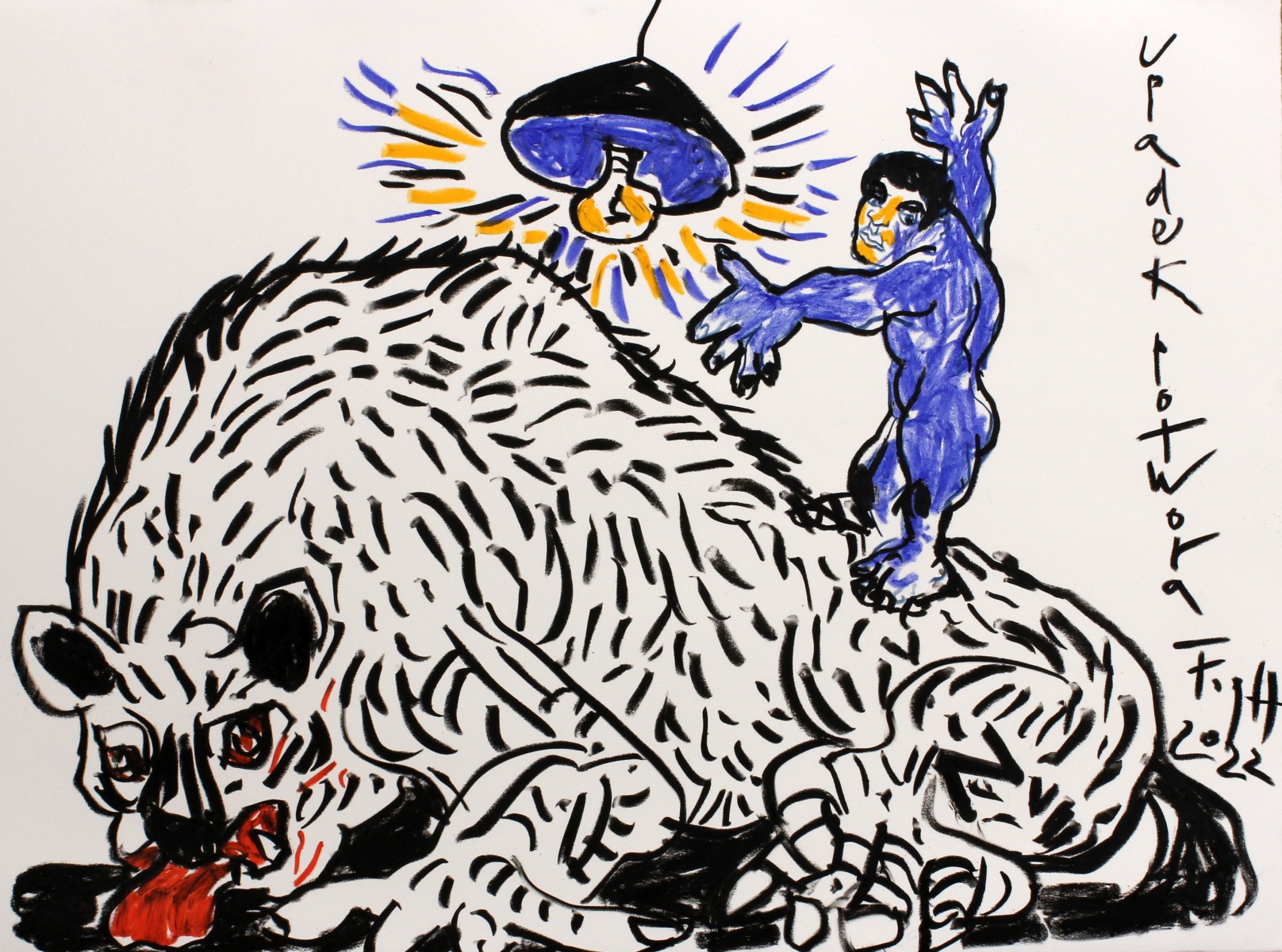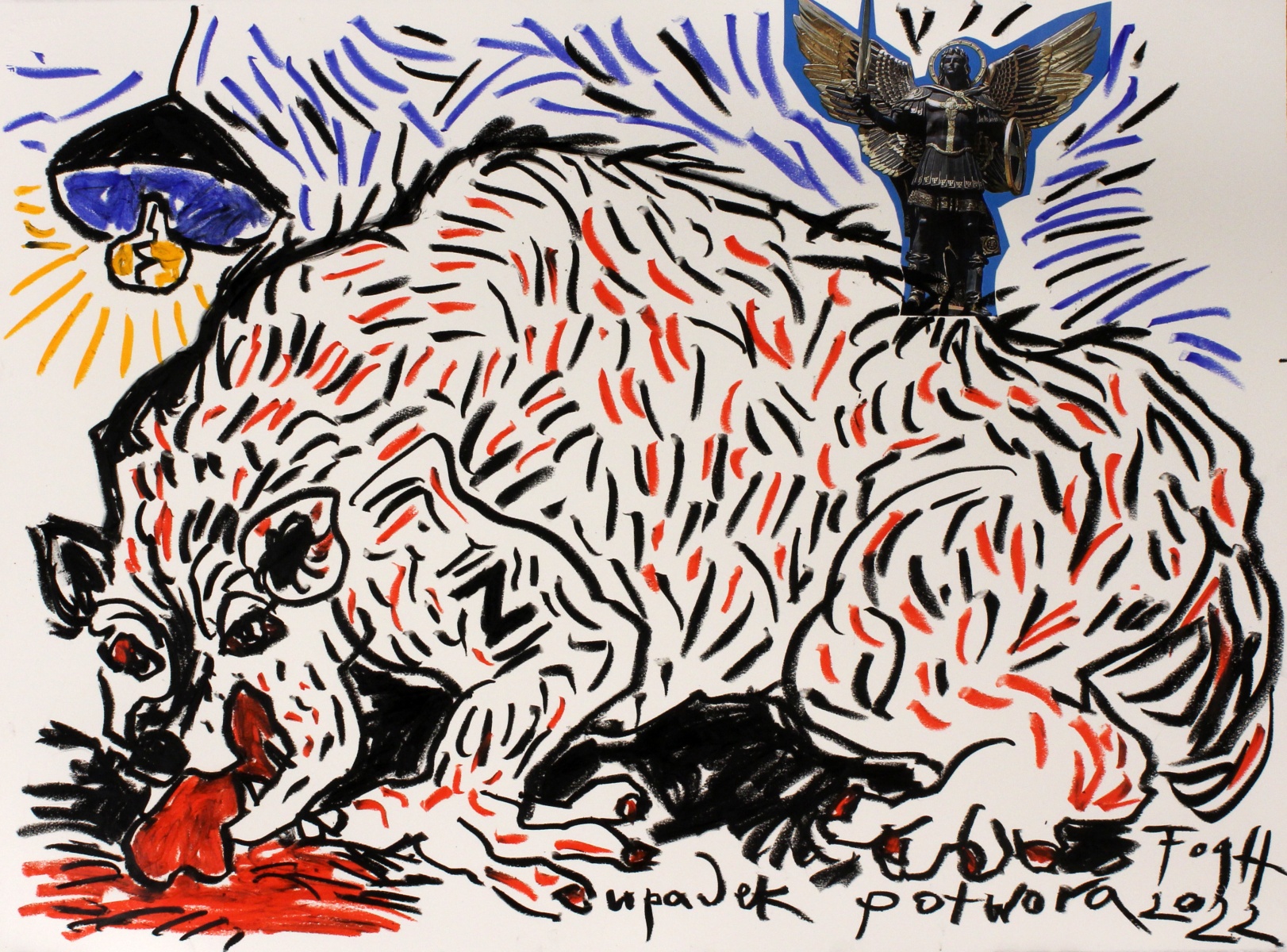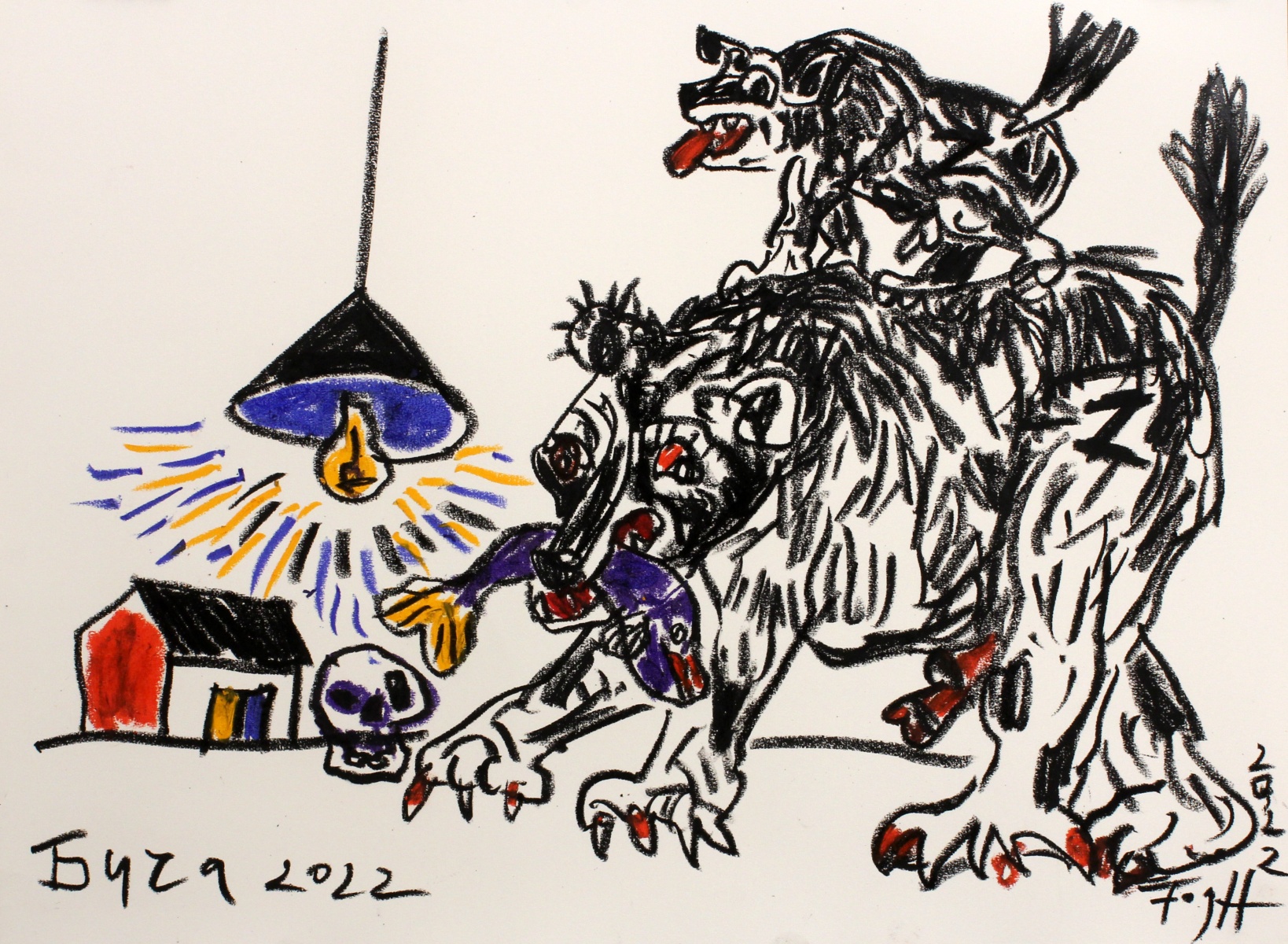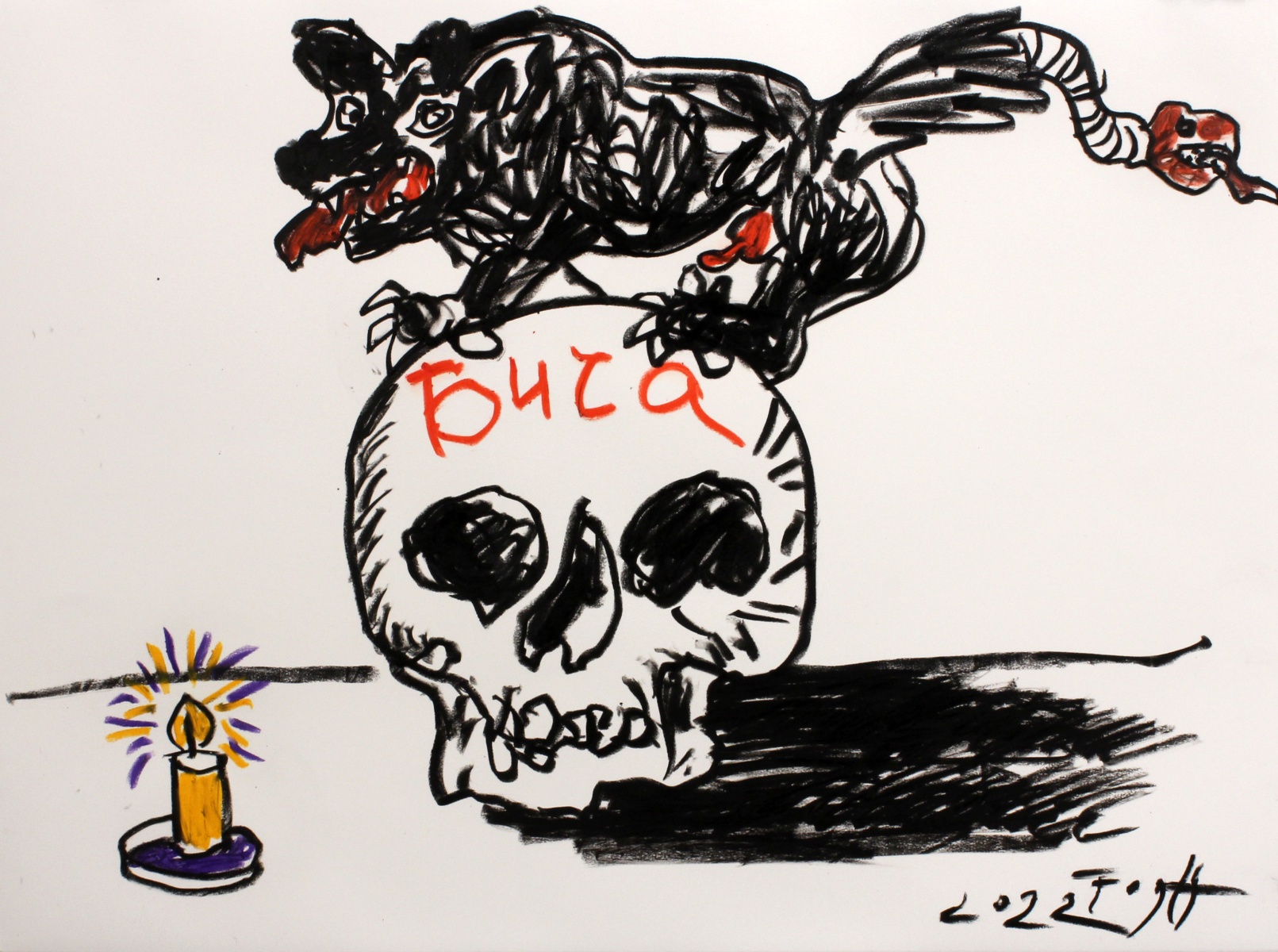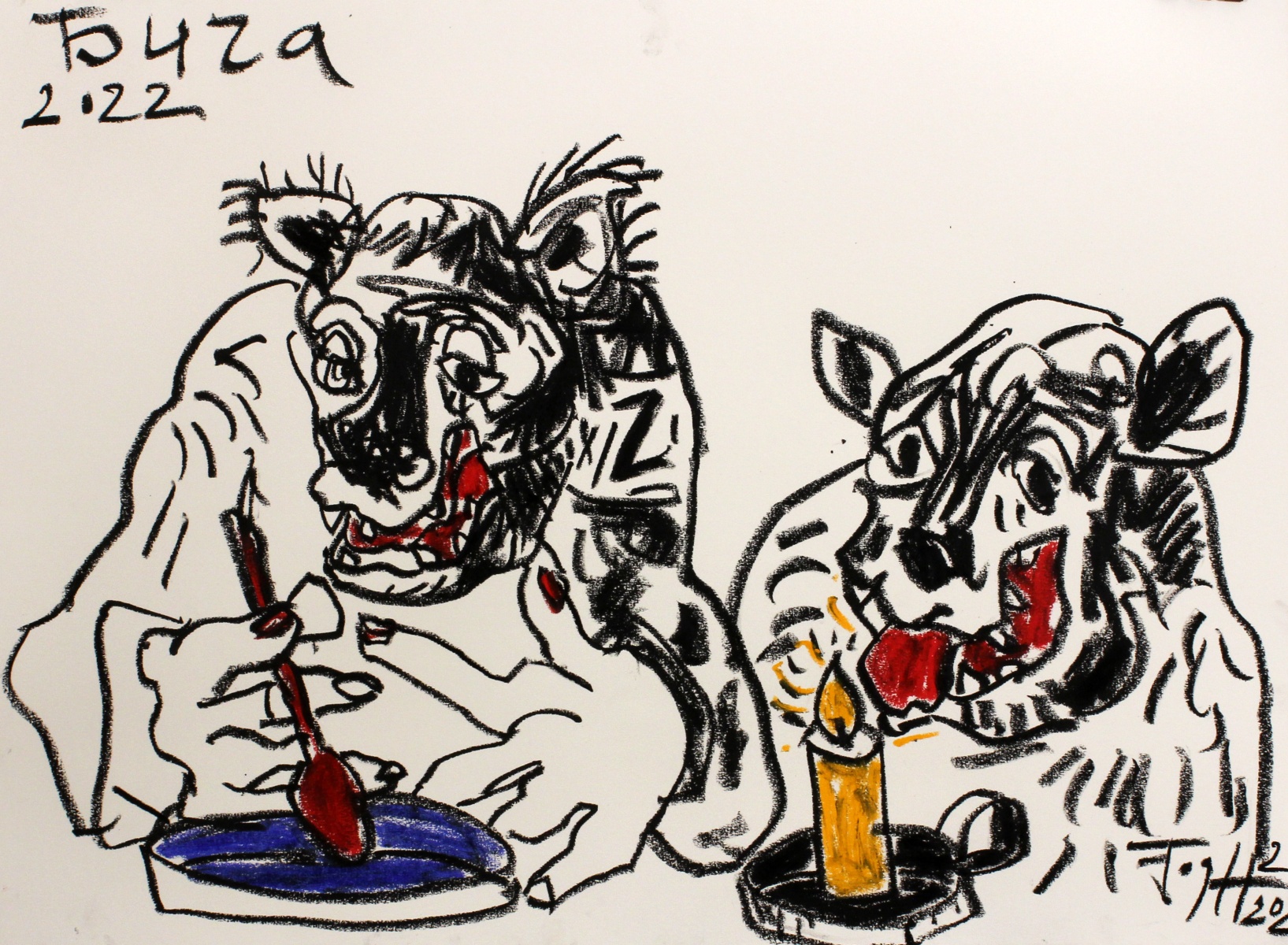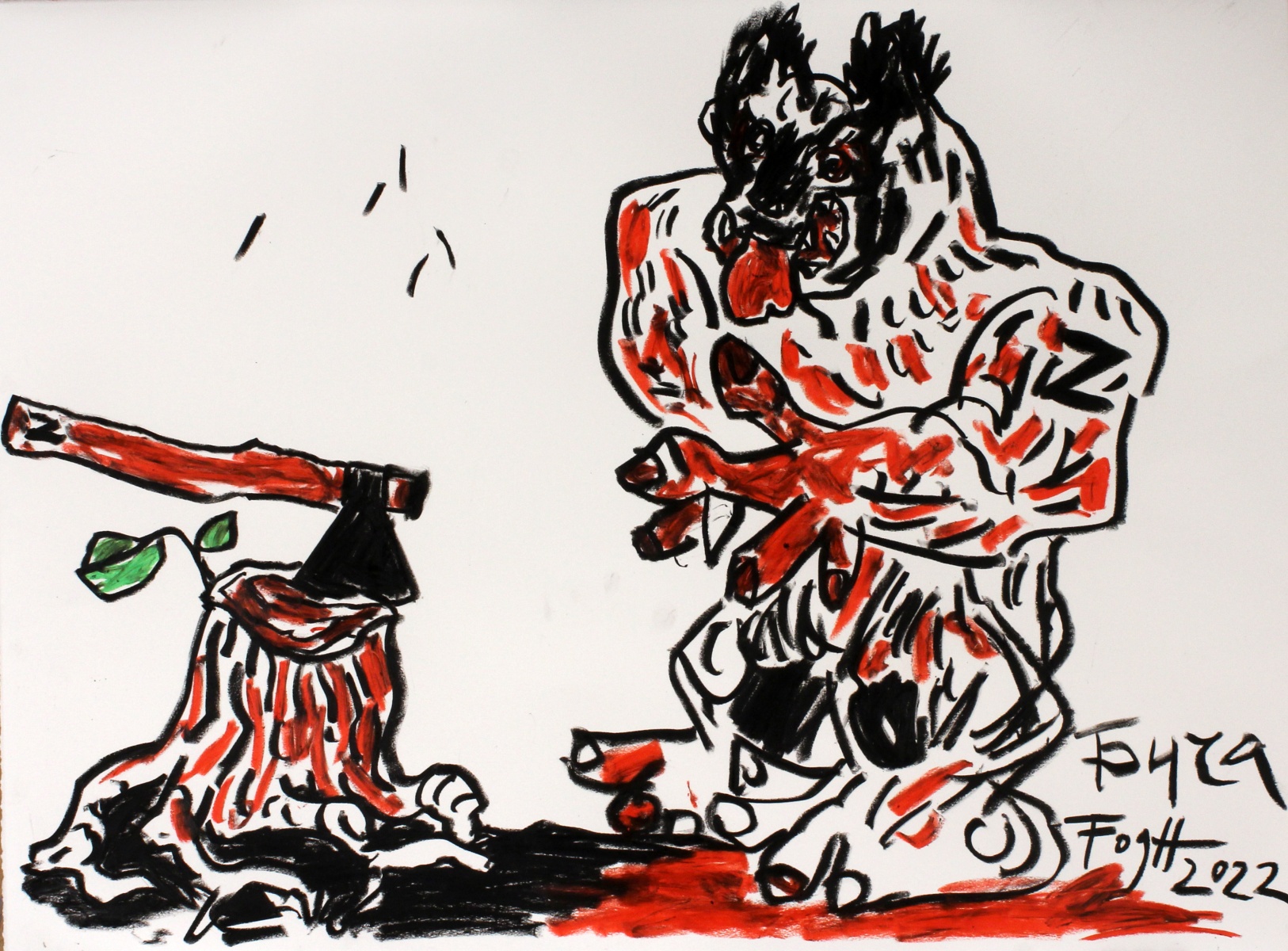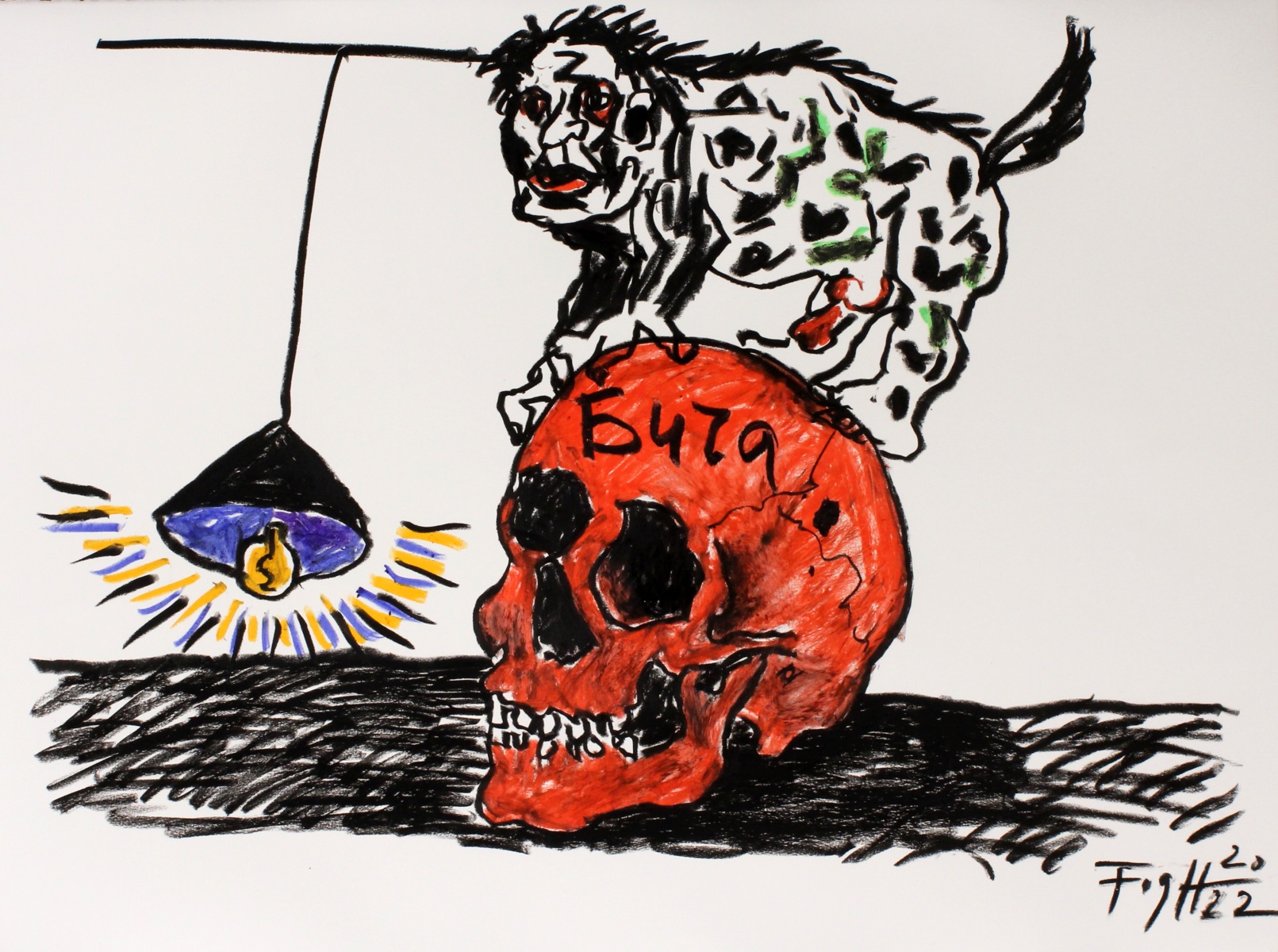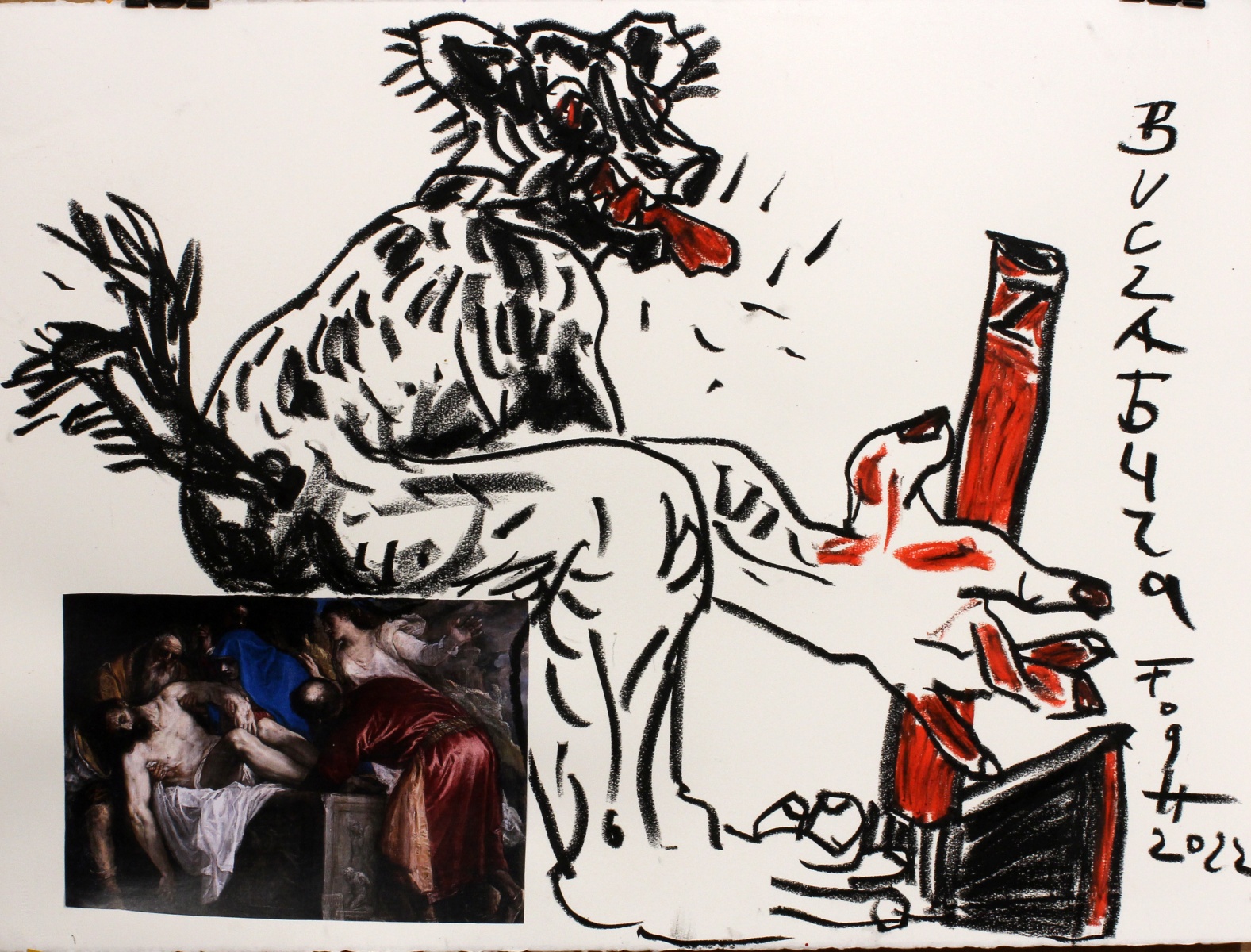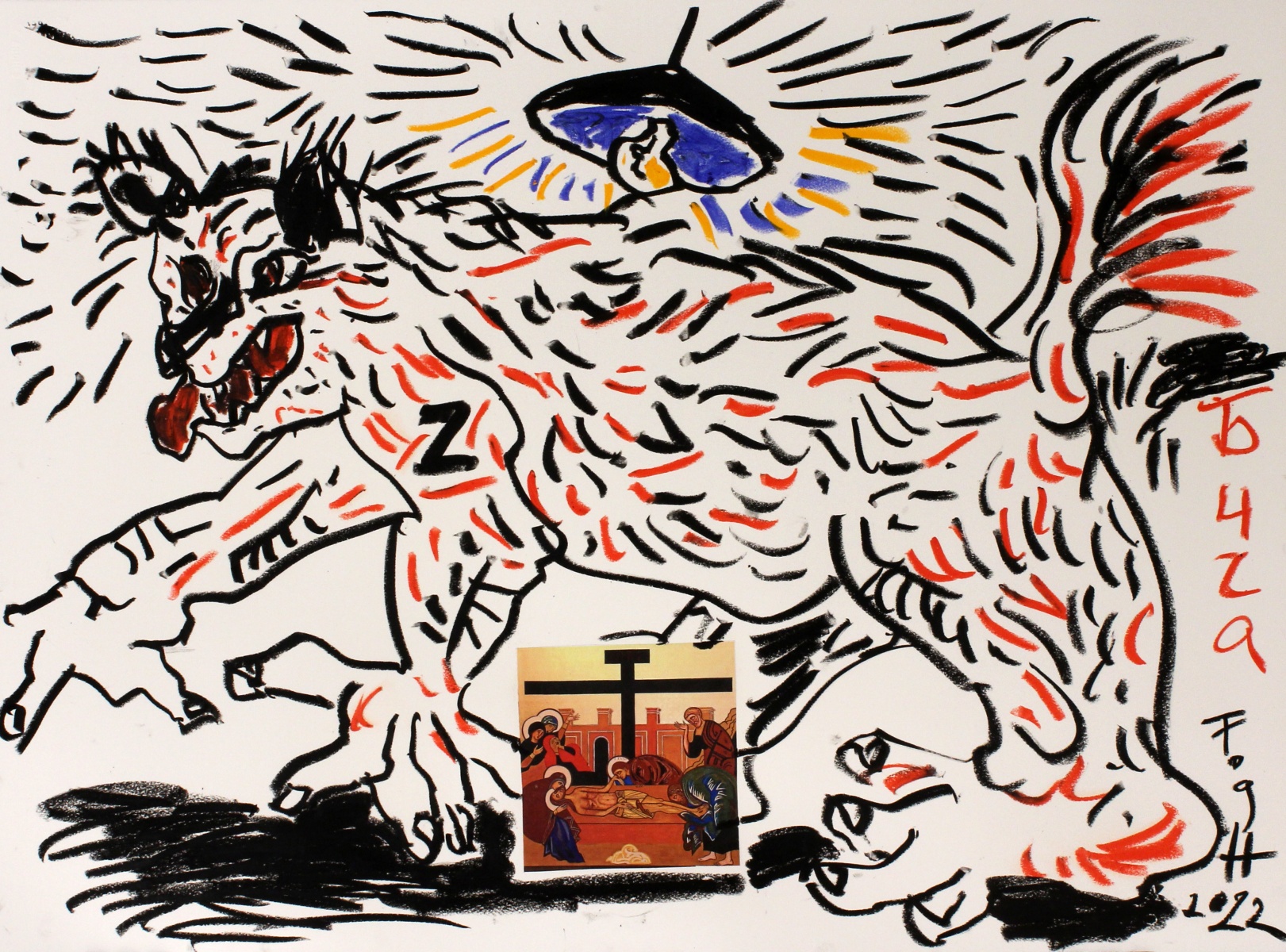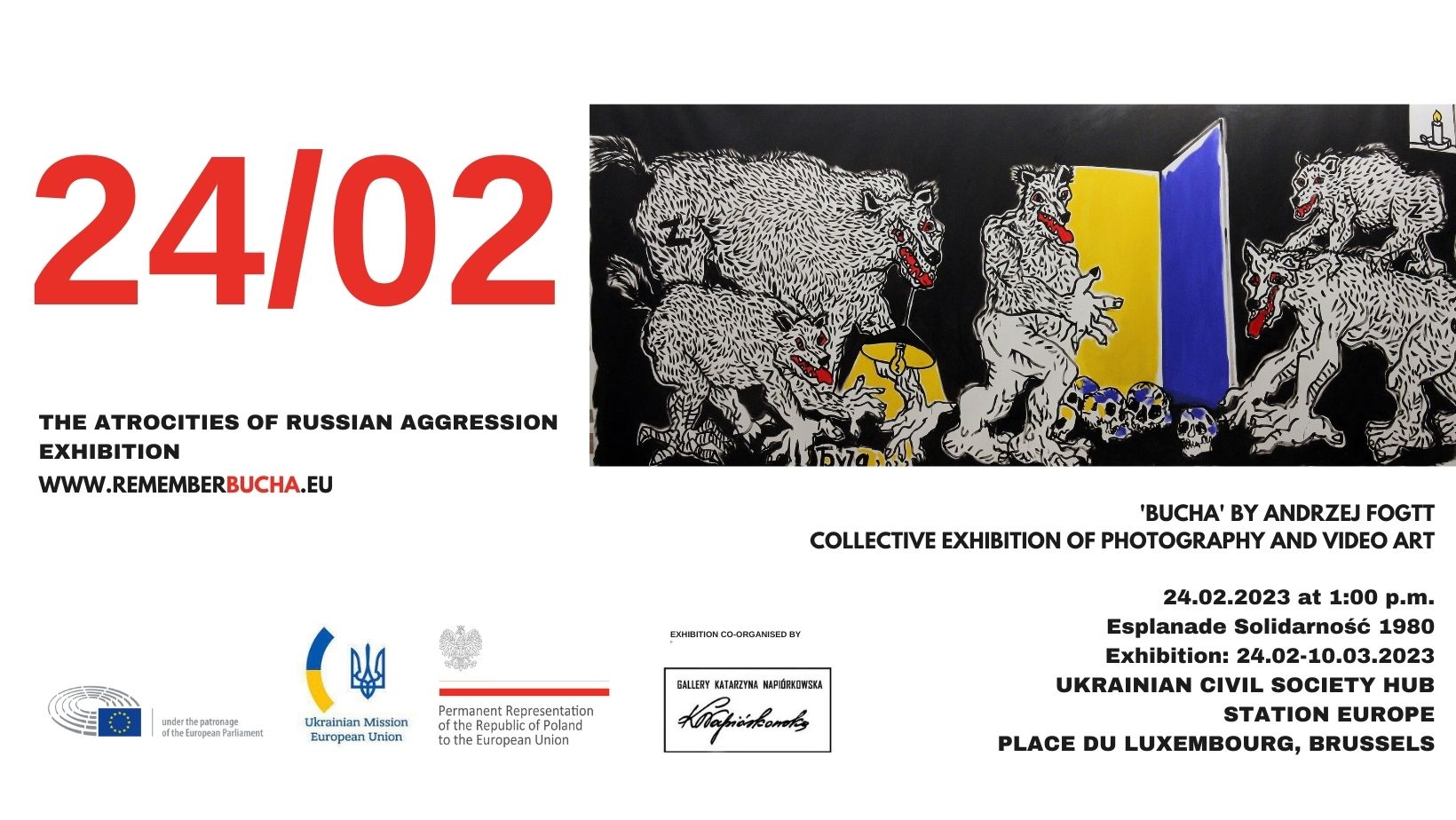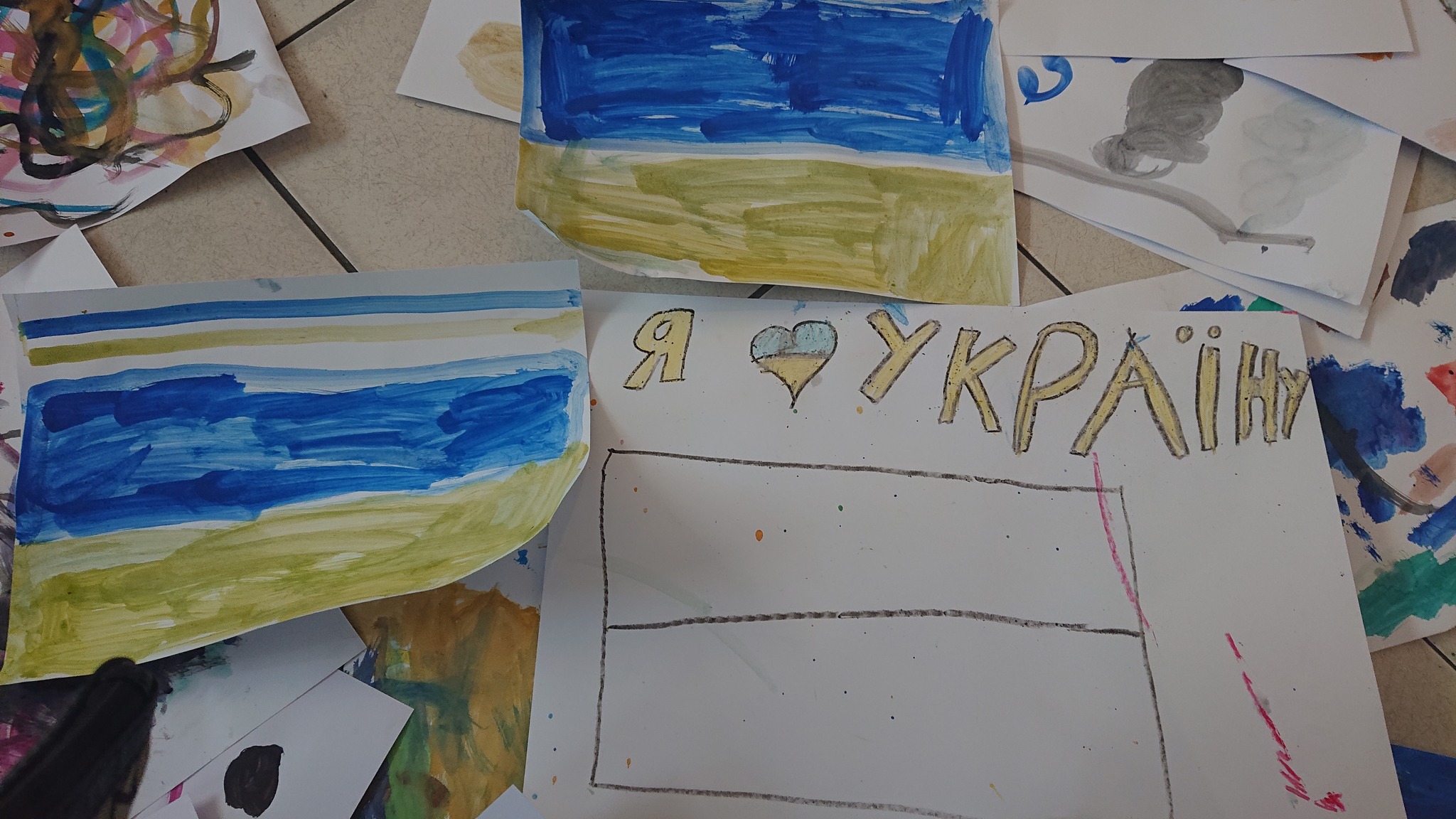BUCHA. ATROCITIES OF RUSSIAN AGGRESSION. ANNEX.
BRUSSELS. GALLERY OF KATARZYNA NAPIÓRKOWSKA
24.02.2023-25.03.2023
A small exhibition prepared at the Katarzyna Napiórkowska Art Gallery in Brussels, Mont des Arts 8, in the form of an annex to the exhibition at the Ukrainian Civil Society Hub at the European Parliament.
The exhibition consists of several objects that make up a synthetic indication of the multidimensional suffering to which Ukraine has been exposed.
THE FRAGMENT OF THE BOMB
The fragment of the bomb that fell on Kharkiv on July 11, 2022.
This is just one of thousands of bombs with which the Russian aggressor is constantly attacking Ukrainian cities and towns, destroying infrastructure, buildings, cultural institutions, cultural heritage, but above all bringing death.
There is still a dark residue on the shard brought from Kharkiv by a Pole who went there on a charity mission. It covers a fragment of metal like a patina, testifying to the deadly effect of the bomb. It should be written with chronicler’s matter-of-factness that this bomb killed 4 people and wounded 16.
Fingerprints are visible on the charred metal – this is already the touch of those who became witnesses.
DATE, WHICH CHANGED THE WORLD
Date 24/2/2022 – is the date that changed the world. It has become a turning point.
For many experts, it was expected. But nothing prevented it.
This date changed our attitude towards war, first of all moving the word “war” in Europe from a space reserved for several decades to a description of the past, usually closed with the slogan “Never again”.
The war in Ukraine, de facto started in 2014, took on a huge scale with the dawn of February 24, 2022. It is an aggression which in a special way requires us – its witnesses – to overcome the feeling of our own helplessness. We see it in live – in broadcasts, social media and recordings. The Ukrainians showed unprecedented heroism and perseverance. At the same time, so many people – especially in neighbouring countries – including Poland – could and can prove in a concrete way that every gesture, every action is important in helping a nation leading a mighty fight.
Certainly to the victory!
SANDBAGS
Sandbags- this is a new attribute of Ukrainian cities. In Odessa, Lviv and Kiev, monuments were secured with them.
Sandbags have become a means in the fight to protect cultural heritage, once again proving perseverance, consistency and the strength of unity that is needed to save not only cultural heritage, but also the world of values.
CLOSER: ETCHING BY LESZEK RÓZGA
Professor Leszek Rózga’s etching from 1981 has two titles: “Close” or “Closer distance”.
A small aquafore shows the apocalyptic dimension of war. The destruction and toll of death brings to mind Bosch’s most terrifying visions. At the same time, it turns out to be very contemporary.
Leszek Rózga was born in 1921 in Łódź. At that time, it was a multicultural city, called the “Promised Land” in reference to the title of the novel by the Nobel Prize winner in literature, Władysław Reymont. The Second World War, which brought unimaginable devastation to Poland, turned the once multicultural city into a kind of “stump” – a monolith full of decaying tenement houses, deprived of a large part of its former inhabitants.
As the artist’s daughter, Małgorzata Rózga, recalls, until the 1970s, i.e. thirty years after the war, Professor Leszek Rózga could not free himself from the yoke of wartime reminiscences. This manifested itself in the creation of works populated by ghosts, with rotten silhouettes of the exhumed, in the background of which cities of ruins rose up to the horizon.
BUCHA: PASTEL BY ANDRZEJ FOGTT
Andrzej Fogtt’s work entitled Bucha is part of a series of paintings and pastels with the same title.
The artist began creating them in April 2022, when it turned out to be the bestiality of Russian soldiers in the territories they occupied.
The time when Ukrainian armed forces liberated cities previously occupied by Russians revealed shocking facts.
Bucha, a place of torture and intimidation of civilians, has become a symbol of the methods used by the Russians in other places as well: e.g. Irpień, Borodianka, Hostomel. The bestiality of the aggressors ranks them among the greatest barbarians in history.
The presented work by Andrzej Fogtt also includes the context of the death of Christ – on the one hand, as a reference to funeral rituals, which determine the basic, civilizational dimension of culture. In places occupied by the Russians, mass graves and bodies abandoned for many weeks in the streets became a shocking “norm”, which added another dimension to the tragic fate of the inhabitants. On the other hand, it is a reference to Easter celebrated in the Orthodox Church in the year of aggression in the second half of April, when a monster plans were being implemented in the attacked areas. This reference refers to the instrumental, cynical use of religion – also thanks to its superiors – to carry out a cruel “mission”. It does not bring the evangelical promise of salvation, but humiliation and destruction, but also heralds the time of damnation for the perpetrators of cruel crimes.
REMEMBERBUCHA.EU
RememberBucha.eu is an independent initiative to showcase artistic responses to war crimes committed by Russian Army against Ukraine.
It is a curated project which aims to collect information on artistic output created by artists around the world.


